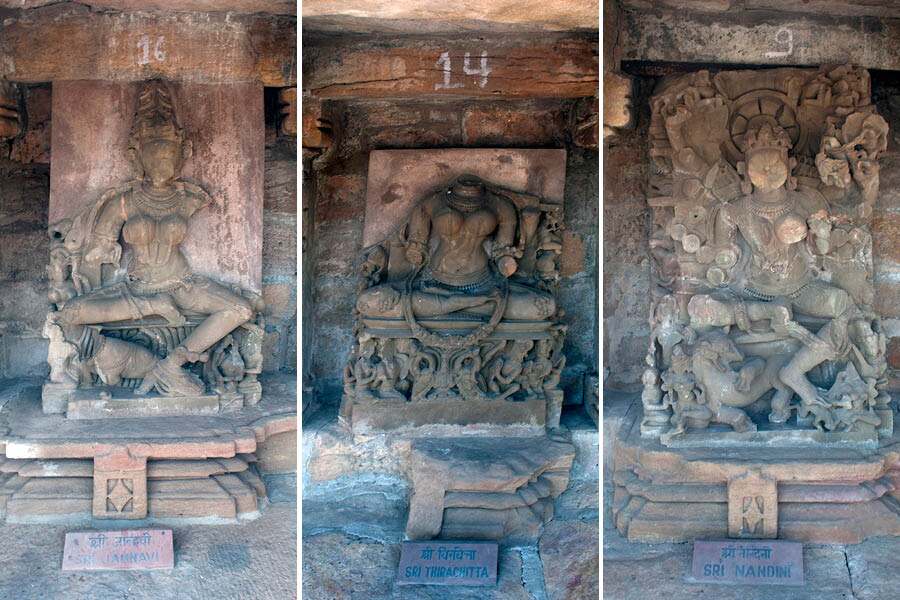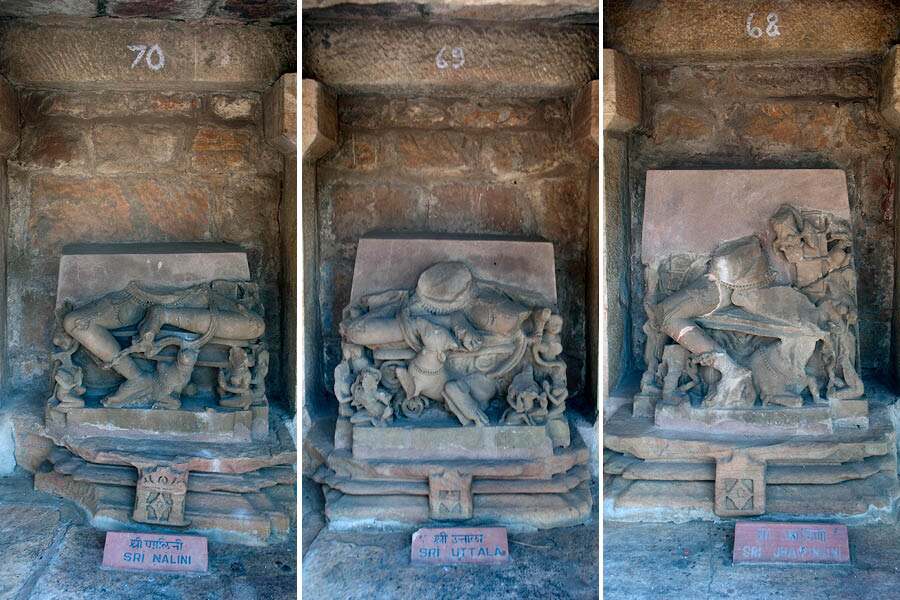‘Yogini’ refers to a female master practitioner of tantra and yoga. It also refers to a female spiritual teacher in the Indian sub-continent and Tibet. They often appear in groups of 42, 64 and 81 of which 64 is the most common combination. Even when there are 64 ‘yoginis’, these are not always the same. The shrines dedicated to the 64 ‘yoginis’ are known as Chausath Yogini temples. Several of these shrines are spread across north and east India.

More or less intact sculptures of ‘yoginis’
The Marble Rocks and Dhuandhar Waterfalls are the prime attraction of Jabalpur. Although located 25km south of Jabalpur in Bhedaghat, the Marble Rocks and Dhuandhar Waterfalls are considered as part of Jabalpur sightseeing. Every day, hundreds of tourists, including locals, visit the thundering waterfalls and enjoy an amazing boat ride along the Narmada river, meandering through the towering marble cliffs. Sadly, majority of these tourists miss out the nearby Chausath Yogini Temple.
The Chausath Yogini Temple is located on a small hilltop overlooking the Narmada river and is approached by a long flight of about 150 stairs. It follows a circular plan with inner and outer diameters measuring 116ft and 131ft, respectively. The circular courtyard houses a shrine dedicated to Shiva and Parvati. The circular enclosure houses 84 niches, out of which three operate as the two gateways of the complex. Two adjoining niches on the west serves as the bigger gates, while a single niche on the southeast serves as the smaller gateway.

The circular structure was part of the original temple and the central shrine came up almost two centuries later. It was probably constructed by queen Alhanadevi, wife of Kalachuri king Gayakarna, in 1155 AD. Known as Gouri Shankar temple, it contains the stone idol of Shiva and Parvati riding a bull. The temple is not located at the exact centre of the complex but rather slightly to the south-east.
Eighty-one of the 84 niches (remaining three are part of two gates) houses different statues, including those of the yoginis. According to some experts there are 64 ‘yogini’ statues, while the rest houses Brahmanical deities like Shiva and Ganesha. Another school of experts opine that all the 81 house yoginis and it was actually an 81-yogini temple instead of a 64-yogini temple.

Defaced and partially damaged sculptures of ‘yoginis’
Also, according to experts, several of the statues presently displayed in the niches have been brought from ruined temples nearby. It is also believed that several original yogini statues have been removed to other locations. So, these keep the visitors in the dark but presently almost all the statues are numbered and provided with name plates.
The ‘yogini’ and other statues displayed in the circular niches are in various forms of decay. Some have been defaced and some have portions of their limbs missing. Some even are in complete decay with only portions of their lower body. It is believed that the statues were defaced by intruders. According to legend, Muhammed Ghori came to destroy the temple but was driven away by a swarm of bees.

Severely damaged sculptures of ‘yoginis’
Today, a large chunk of visitors visiting the Marble Rocks and Dhuandhar Waterfalls miss out on this remarkable Chausath Yogini Temple, where the stone speaks volume of the long-gone glorious era. The soothing surrounding greenery and the bird’s-eye view of the meandering Narmada are also not to be missed.


